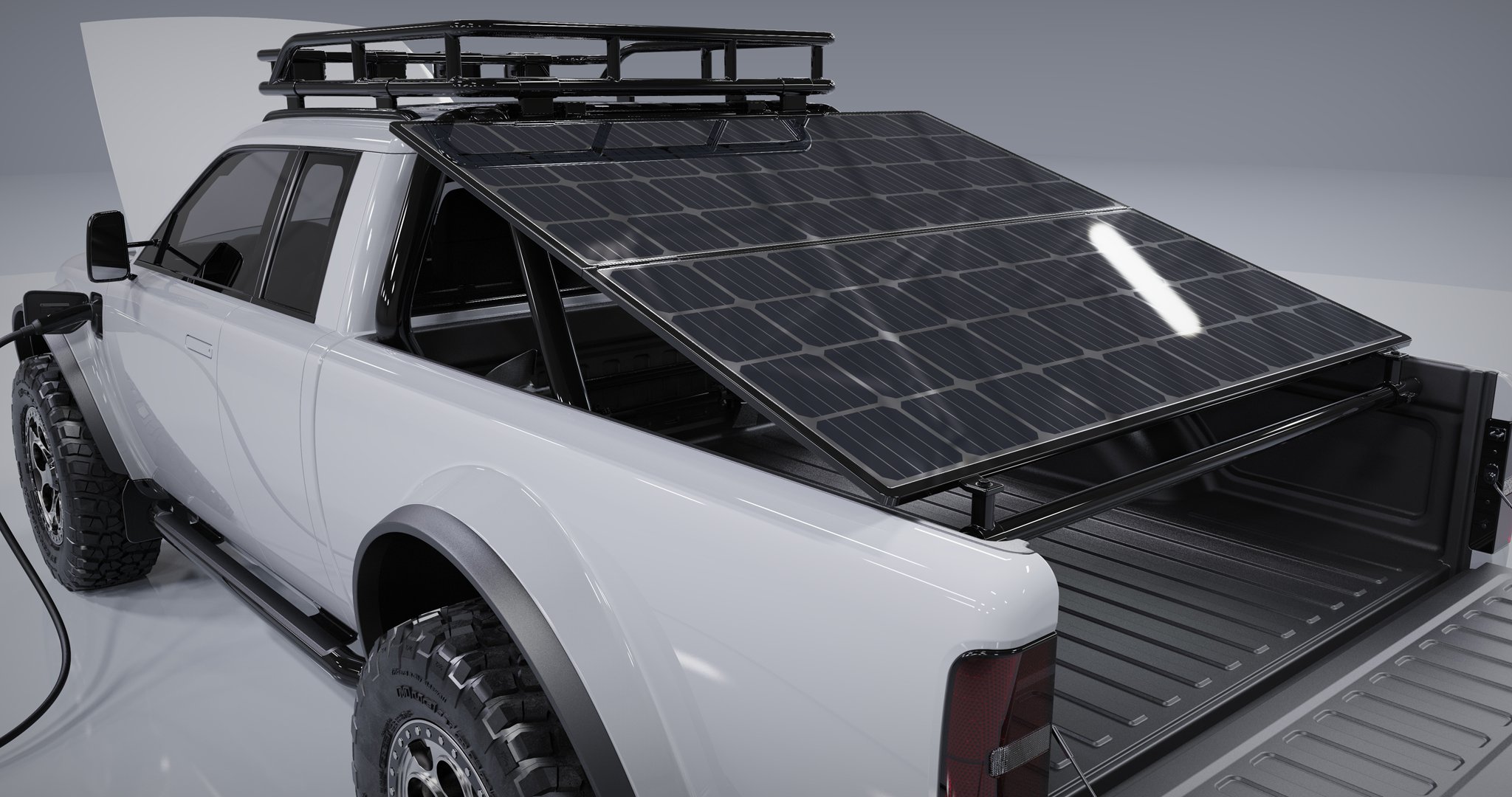Enhancing Electric Vehicle Potential
The EV Advantage
A typical consumer can do 92% of their driving with home charging and would therefore require an average of only 6 stops at a publicly available fast charger per year, which compares with around 40 stops at gas stations every year for the same driving distance in a gas-powered vehicle.
*Alpha has been planning wall-mounted home charging solutions to be included as an optional accessory with its vehicles. Visuals are provided for illustrative purposes only.
In reference to the chart titled “The EV Advantage,” and the reference to “refueling” being reduced significantly as compared to that of a gas-powered vehicle, to “an average of 6 times per year,” which is “34 fewer trips to the gas station,” is intended to highlight the comparative advantage of charging an EV to refueling of a traditional gasoline-powered vehicle at the gas station.
Our definition of “home charging” includes residential areas where EV chargers can be installed, which includes (1) Personal Garage, (2) Assigned Parking, and (3) Shared Parking. According to the department of energy, around 80% of EV owners today charge their vehicles at home.
Home charging is not only convenient, but also more cost-efficient than gasoline (national average of US$0.23 per kilowatt-hours vs. US$3.51 per gallon of gasoline at current rates), and not to mention the price of gasoline being highly volatile. We are living beyond our ecological means by depending on gasoline as a main source of energy for transportation. The world needs sustainable solutions in mobility which is reflected in the rapid growth of EV sales in the U.S., an increase of 3.2% to a total of 5.8% of all new vehicles sold last year were zero-emission.
With a goal to achieve 100% zero-emission vehicles by 2035, California is leading the electrification of cars with 18.8% of all new cars sold in 2022 being zero-emission as well as making up 40% of the U.S. EV market. Please also note the 2021 Infrastructure Investment and Jobs Act which allocates US$7.5 billion in EV charging infrastructure. California residents may visit https://driveclean.ca.gov/search-incentives for incentives on installing EV chargers at home.
Sustainable Driving
Now referring to our January 27, 2023, campaign update “Alpha’s Strategy Behind 275+ Miles of Driving Range,” people living in the U.S. drive an average of 12,875 miles a year, which is approximately 35 miles a day. Only 20% of the fuel in a gasoline car is used to drive the vehicle while most of it is lost in engine heat, whereas nearly 90% of the battery energy in an EV is used in driving.
Alpha’s electric vehicles are in development to integrate battery packs with an estimated energy capacity range of between 65kWh to 85kWh generated from NMC 21700 Lithium-Ion battery cells with a total operating Voltage of up to 400V. At an average range of 3.3 miles to 3.8 miles per kWh, our EVs are projected to achieve anywhere between 250 miles to 300+ miles of range.
*Alpha is currently building its next prototype with an integrated CCS charger. Visuals are provided for illustrative purposes only.
Alpha is planning to equip its electric vehicles with both home-charging capabilities using a standard 120V AC outlet and DC fast-charging using a Combined Charging System (CCS) to achieve 80% charge in 30 minutes to an hour. Full ISO 15118 compatibility (an international standard defining V2G communication interface for bi-directional charging/discharging of electric vehicles) is also expected to support user-friendliness and support wide adoption of our EVs.
8 hours of recharging at home using a Level 1 charger (4 miles to 5 miles of recharge per hour using a 120V AC outlet with no equipment installation required) is projected to enable the vehicle to be driven another 30 miles to 35 miles after the daily drive (35 miles driven on average per day by people living in the U.S.). We believe that is sustainable driving.
Routinely Charging Your EV is Recommended
An electric vehicle has a 12V battery used to power basic controls when the vehicle is parked. The 12V battery allows separation between high voltage and low voltage for safe and efficient energy management.
We recommend routinely charging the battery of an EV to full capacity using low power to maximize service life. This will also keep the 12V battery in good condition and enable the vehicle to draw power from a continuous source of electricity to maintain the battery cooling and or heating systems. Otherwise, those systems will draw power from the main battery pack until it is plugged into another power source. Leaving the battery of an electric vehicle uncharged for a long period of time such as more than 4 months is not recommended.
Patented Solar Charging and Induction Charging
*Visuals are provided for illustrative purposes only.
Alpha’s patented vehicle system includes unique charging solutions including a roof mounted solar panel which is operatively connected to the rechargeable battery pack of the vehicle. The battery pack receives electrical power through a plug-in cable, solar panel, and electromagnetic induction.
The current average cost of charging an EV is US$.04-US$.046 per mile, which results in a range of around US$12 to US$30 to fully charge a vehicle with 275 miles to 300 miles of range depending on time and location within the U.S. We believe Alpha’s down-to-earth and frugal approach to EVs will not only help the world to achieve a green economy, but it will also provide people with access to sustainable driving that is both cost-efficient and enjoyable in the long term.
Related Links and Sources: https://www.energy.gov, https://www.gov.ca.gov, https://www.fhwa.dot.gov, https://www.eia.gov, https://driveclean.ca.gov




